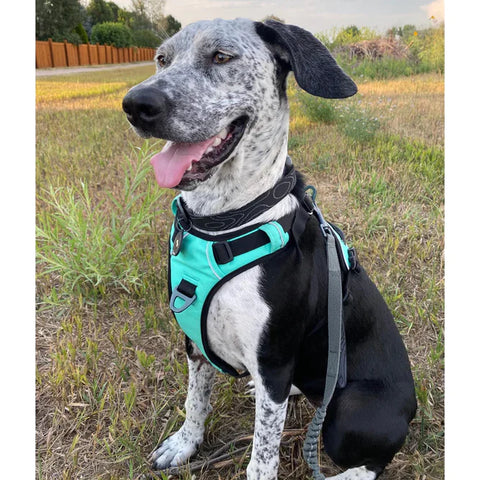737-215-3211

The 7 Essential Steps to Successfully Leash Train Your Dog
Introduction to Leash Training
Leash training is more than just a simple task—it's an essential communication bridge between you and your pet. Through this bond, you can ensure your dog's safety, provide discipline, and most importantly, build trust.
Why it's Important:
Leash training is a gateway to a balanced relationship with your dog. It ensures that your pet understands your commands and respects boundaries, thus preventing potential mishaps during walks.
Benefits of Proper Leash Training:
Successfully training your dog can lead to numerous benefits. Not only does it promise a stress-free walk in the park, but it also guarantees the safety of your pet, other animals, and even people around.
Misconceptions about Leash Training:
Many people believe that leash training might restrict a dog's freedom. In reality, it offers them more freedom in a controlled and safe environment.
Preparation before Beginning
Before you venture into the world of leash training, a few initial steps ensure a smoother journey.
Choosing the Right Leash:
Investing in a sturdy yet comfortable leash is pivotal. Depending on your dog's size and temperament, the type of leash may vary.
Understanding Your Dog's Behavior:
Every dog is unique. By observing their reactions to various stimuli, you can tailor your training methods accordingly.
Setting the Training Environment:
An ideal starting point is a quiet, familiar place. This minimizes distractions and helps your dog focus on the training.
The 7 Essential Steps to Successfully Leash Train Your Dog
This section offers a step-by-step guide, ensuring a thorough and efficient training process.
Familiarizing the Leash and Collar:
Begin by letting your dog wear the collar and leash around the house. This helps them get used to its feel without the pressure of training.
Introducing Leash Pressure:
Gently apply pressure on the leash, and reward your dog when they move towards you, teaching them to follow your lead.
Short Indoor Sessions:
Initiate training sessions indoors. The controlled environment minimizes distractions, ensuring your dog focuses on the lessons.
Gradual Introduction to the Outdoors:
Once your dog seems comfortable indoors, slowly introduce them to the outside world, beginning in your backyard.
Addressing Pulling and Lunging:
If your dog pulls or lunges, stop walking. Only proceed when they calm down. This teaches them that calm behavior is rewarded with continued walks.
Consistency and Reinforcement:
Like any training, consistency is key. Regularly practice and positively reinforce good behavior.
Socializing in Public Areas:
Once your dog masters the basics, expose them to public areas. This teaches them to behave even in distracting environments.
Shop Puppy Fever Pro's Leash Collection
Addressing Common Challenges
Every journey has its obstacles. Here's how you can navigate common leash training challenges.
Overexcitement and Distractions:
Distractions are inevitable. Teach your dog the "focus" or "watch me" command to regain their attention during walks.
Fear and Anxiety in Dogs:
Some dogs might be anxious outside. Positive reinforcement and gradual exposure can help them overcome this fear.
Aggression Towards Other Dogs:
If your dog displays aggression, seeking professional help or enrolling them in socialization classes can be beneficial.
Benefits of Thorough Training
Strengthened Bond with Your Dog:
Through training, you understand your dog better, fostering a deeper bond built on trust and understanding.
Safety for Dog and Others:
A well-trained dog ensures safety for themselves, other animals, and the people around.
Peaceful and Enjoyable Walks:
Imagine a walk where both you and your dog can relax and enjoy. That's the result of thorough leash training.
FAQs
How long does it typically take to leash train a dog?
Every dog is different, but with consistent training, most dogs can be trained in a few weeks to a couple of months.
What should I do if my dog refuses to walk?
Try using treats or toys to motivate them. Ensure there's no medical reason for their reluctance.
Can older dogs be leash trained?
Absolutely! While it might take a bit longer, older dogs can certainly learn new tricks.
How often should I practice leash training?
Consistency is key. Practice daily, even if it's just for a few minutes.
Is it necessary to hire a professional for leash training?
While not necessary, if you face challenges, seeking a professional's help can be beneficial.
Can harnesses aid in leash training?
Yes, especially for dogs that pull. Harnesses distribute pressure evenly, making it more comfortable for the dog.
Conclusion and Final Thoughts
Leash training is an enriching experience that deepens the bond between you and your furry friend. By adhering to the 7 essential steps and being patient, you pave the way for countless peaceful walks and cherished moments.




Leave a comment